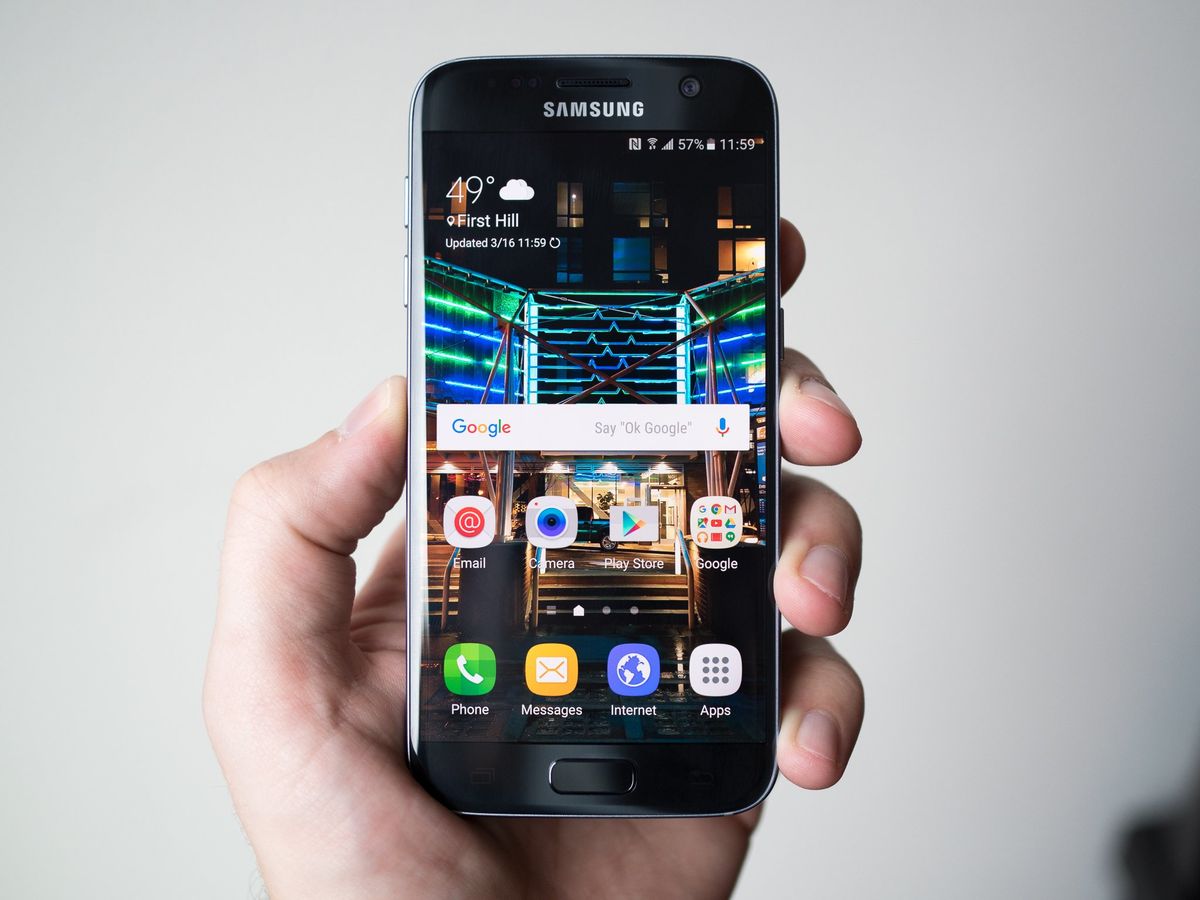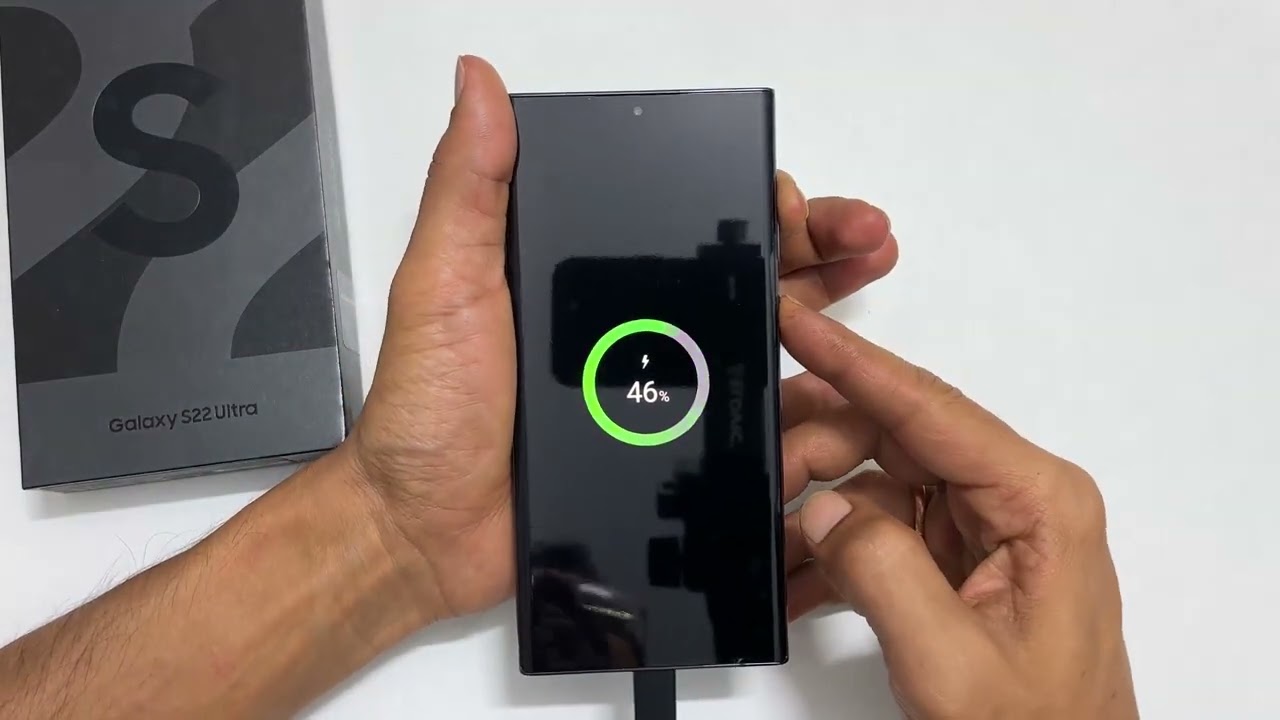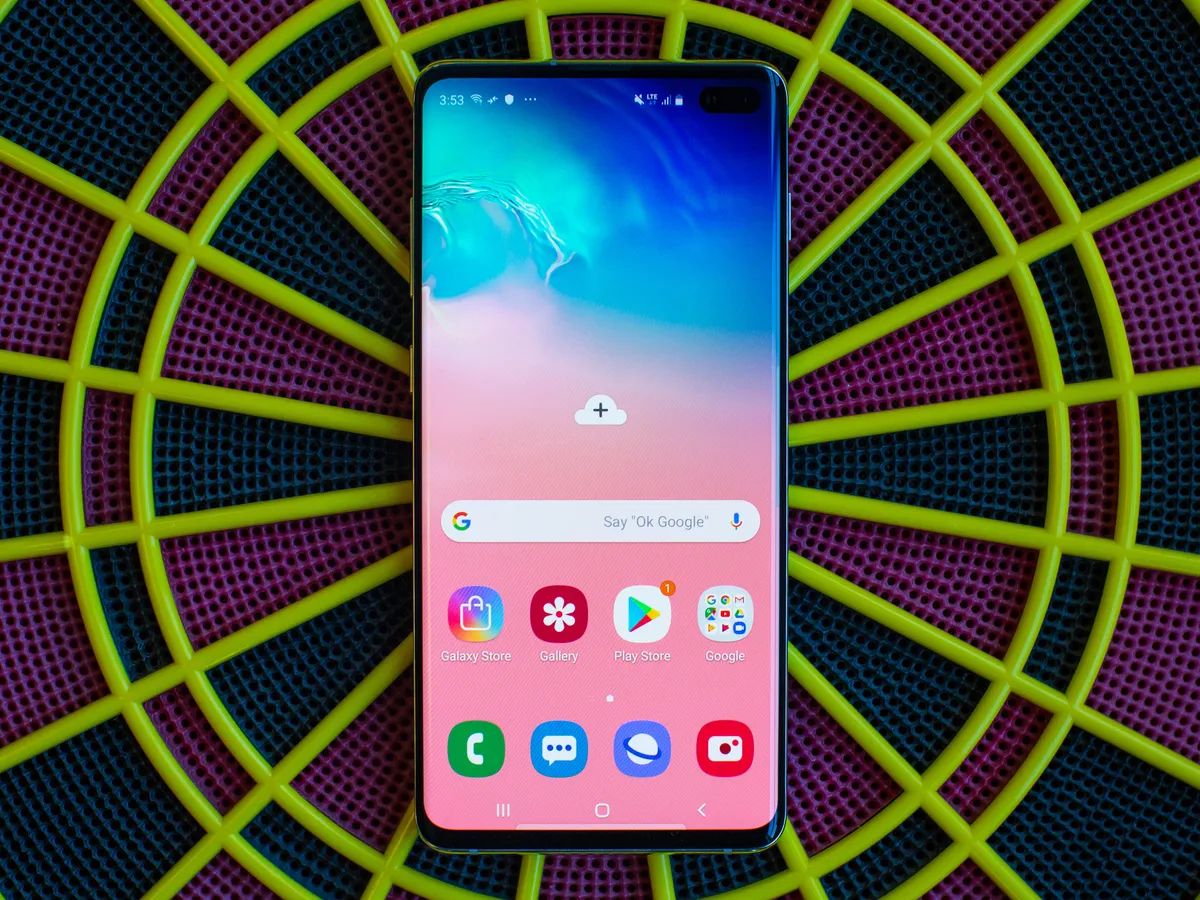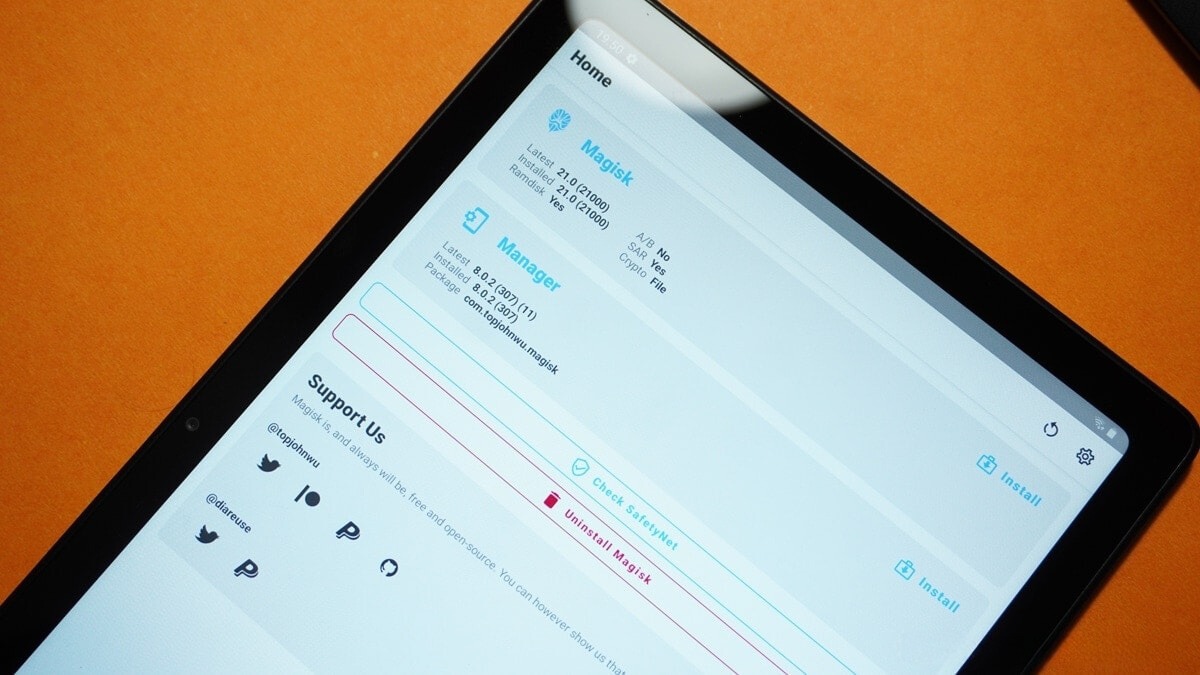Introduction
Welcome to our guide on how to reset network settings on Samsung Galaxy smartphones. In today’s fast-paced digital world, our smartphones have become an integral part of our lives, playing a crucial role in keeping us connected. Whether it’s browsing the internet, making calls, or using various apps, a stable network connection is essential for a seamless experience.
However, there may be instances where you encounter network-related issues on your Samsung Galaxy device. These issues can range from slow internet speeds and connectivity problems to Wi-Fi or Bluetooth connection failures. In such cases, resetting the network settings can often be an effective solution.
Resetting the network settings on your Samsung Galaxy device helps to clear any network-related configurations or settings that might be causing connectivity problems. It essentially brings the device back to its default network settings, erasing any saved Wi-Fi networks, cellular settings, VPN configurations, and more.
By resetting network settings, you can troubleshoot common network issues, such as problems with Wi-Fi connections, Bluetooth connectivity, or mobile data. It can also help resolve issues like frequent network disconnections, inability to connect to certain networks, or problems with network-related features on your Samsung Galaxy device.
Before proceeding with the network reset, it’s important to note that this action will not delete any personal data, apps, or files from your device. However, it will clear any saved Wi-Fi passwords and other network-related settings, so you may need to re-enter them manually following the reset.
In the following sections, we will show you how to reset network settings on your Samsung Galaxy device, step by step. Whether you have a Samsung Galaxy S21, Galaxy Note 20, or any other Samsung device running on the Android operating system, these instructions should apply to most models.
Why Reset Network Settings?
There are several reasons why you might consider resetting the network settings on your Samsung Galaxy device. Here are a few common scenarios where a network reset can be beneficial:
- Network connectivity issues: If you’re experiencing frequent network disconnections, slow internet speeds, or difficulties connecting to Wi-Fi networks or Bluetooth devices, resetting the network settings can help resolve these issues. It clears any faulty network configurations and gives your device a fresh start.
- Troubleshooting network-related problems: Resetting network settings can be a useful troubleshooting step when you’re facing specific network-related problems. It eliminates any potential conflicts or incorrect settings that might be causing the issue, allowing you to start afresh and reconfigure your network connections.
- Switching networks: If you’re switching carriers or changing your Wi-Fi network, resetting the network settings can ensure a smooth transition. It allows you to erase the existing network settings and start anew, making it easier to set up the new network without any interference from the previous settings.
- Improving network performance: Over time, your device may accumulate temporary network data or cache that can impact network performance. A network reset clears these temporary files and data, optimizing your device’s connectivity and potentially improving network speeds and stability.
- Fixing network-related app issues: Certain apps that heavily rely on network connections, such as messaging apps or VoIP services, can occasionally encounter problems. Resetting the network settings can help resolve these app-specific network issues by ensuring a clean slate for the network configurations.
It’s important to note that while resetting network settings can be a helpful solution for many network-related problems, it should be considered as a troubleshooting step before more drastic measures, such as a factory reset. If the issue persists even after resetting the network settings, it’s advisable to seek further assistance from Samsung’s support or your network provider.
Now that we’ve looked at the reasons why you might want to reset network settings on your Samsung Galaxy device, let’s move on to the step-by-step instructions on how to do it.
How to Reset Network Settings on Samsung Galaxy
Resetting the network settings on your Samsung Galaxy device is a straightforward process. Follow the steps below to perform a network reset:
- Step 1: Open the Settings App
- Step 2: Navigate to General Management
- Step 3: Select Reset
- Step 4: Tap on Reset Network Settings
- Step 5: Confirm the Reset
Start by accessing the Settings app on your Samsung Galaxy device. You can typically find the Settings app in your app drawer or by swiping down from the top of the screen and tapping on the gear icon.
Once you’re in the Settings app, scroll down and select “General Management.” This section typically contains various device management options.
In the General Management section, look for the “Reset” option and tap on it. This will open a submenu with different reset options for your device.
From the list of reset options, locate and tap on “Reset Network Settings.” This action will reset all network-related settings on your device.
A confirmation prompt will appear, informing you that resetting the network settings will remove all saved Wi-Fi networks, Bluetooth devices, and other network-related configurations. Read the prompt carefully and tap on “Reset Settings” to proceed with the network reset.
That’s it! Your Samsung Galaxy device will now reset the network settings. The process may take a few moments, and your device will reboot automatically.
Please note that the exact steps and options may vary slightly depending on the model and Android version of your Samsung Galaxy device. If you’re using an older model, you may need to follow additional steps or look for a “Reset” option under a different section in the Settings app.
Now that you know how to reset the network settings on your Samsung Galaxy device, let’s discuss what happens after you perform the network reset.
Step 1: Open the Settings App
The first step in resetting the network settings on your Samsung Galaxy device is to open the Settings app. The Settings app is where you can access and customize various options and features on your device, including network settings.
To open the Settings app, follow these simple instructions:
- Locate the Settings app icon on your device. It is usually represented by a gear or cogwheel icon and can be found either on your home screen, in the app drawer, or in the notification panel.
- Tap on the Settings app icon to launch it.
Once you have successfully opened the Settings app, you will be ready to proceed to the next step of resetting the network settings.
It’s worth mentioning that the exact appearance and location of the Settings app icon may vary depending on the version of Samsung’s user interface (UI) and the model of your Galaxy device. However, it is usually easy to recognize due to its gear or cogwheel design.
If you’re having trouble locating the Settings app on your Samsung Galaxy device, you can try using the device’s search function. Swipe down from the top of the screen to access the search bar, and then type in “Settings.” This should help you find and open the Settings app quickly.
By successfully completing this step and accessing the Settings app, you are now ready to move on to the next steps in resetting the network settings on your Samsung Galaxy device.
Step 2: Navigate to General Management
Once you have opened the Settings app on your Samsung Galaxy device, the next step in resetting the network settings is to navigate to the General Management section. This section houses various device management options, including the network settings reset option.
Follow these simple instructions to navigate to the General Management section:
- With the Settings app open, scroll down through the list of available options. The exact layout and design may vary depending on your device model and Android version. However, you should be able to see a list of categorized settings.
- Look for and tap on the option labeled “General Management.” This option is typically located towards the top or middle of the list and may have an icon representing management or administrative tasks.
Once you have successfully navigated to the General Management section in the Settings app, you are one step closer to resetting the network settings on your Samsung Galaxy device.
It’s important to note that the naming and organization of settings may differ slightly depending on the Samsung Galaxy model and Android version you are using. If you’re unable to find the General Management option, try looking for a similar category, such as “System” or “Device,” that contains device management options.
Additionally, you can use the search feature within the Settings app to quickly locate the General Management section. Simply swipe down on the Settings screen to reveal the search bar, enter “General Management,” and tap on the relevant result to access the section.
By successfully completing this step and navigating to the General Management section, you are now ready to proceed to the next step of resetting the network settings on your Samsung Galaxy device.
Step 3: Select Reset
After navigating to the General Management section in the Settings app on your Samsung Galaxy device, the next step in resetting the network settings is to select the “Reset” option. This option allows you to access various reset settings, including the network reset function.
Follow these steps to select the Reset option:
- Within the General Management section, scroll down the list of options until you find the item labeled “Reset.” This option is typically located towards the bottom of the section and may have an icon that represents resetting or refreshing.
- Tap on the “Reset” option to proceed to the submenu containing different reset settings.
By selecting the Reset option, you have accessed the menu where you can find the network reset setting for your Samsung Galaxy device. This menu also includes other reset options, such as factory reset or resetting specific settings like accessibility or app preferences.
It’s important to note that the naming and organization of settings may vary slightly depending on the Samsung Galaxy model and Android version you are using. If you’re unable to locate the Reset option, try looking for a similar category, such as “System,” “Device,” or “Privacy,” where reset settings are usually found.
If you’re having difficulty finding the Reset option, you can use the search feature within the Settings app. Swipe down on the Settings screen to reveal the search bar, enter “Reset,” and tap on the relevant result to access the reset settings menu.
By successfully completing this step and selecting the Reset option, you are now ready to move on to the next step of resetting the network settings on your Samsung Galaxy device.
Step 4: Tap on Reset Network Settings
Once you have accessed the reset settings menu in the General Management section of the Settings app on your Samsung Galaxy device, the next step in resetting the network settings is to specifically select the “Reset Network Settings” option. This option is specifically designed for resetting all network-related configurations on your device.
Follow these steps to tap on the Reset Network Settings option:
- Within the reset settings menu, look for the option labeled “Reset Network Settings.” It is usually listed along with other reset options, such as factory reset or reset app preferences.
- Tap on the “Reset Network Settings” option to proceed with the network reset.
By selecting the Reset Network Settings option, you are indicating to your Samsung Galaxy device that you want to reset all network-related configurations to their default values. This includes erasing saved Wi-Fi networks, Bluetooth devices, VPN configurations, and any other network settings you have adjusted.
It’s important to note that resetting network settings will not affect your personal data, apps, or files stored on your device. Only network-related configurations will be reset, allowing you to start fresh with network connections.
Depending on your device model and Android version, the Reset Network Settings option may have an icon representing network connectivity or a refresh symbol. The exact placement and appearance of this option may also vary slightly, but it should be clearly labeled as “Reset Network Settings.”
After tapping on the Reset Network Settings option, you are now ready to proceed to the final step of confirming the network reset on your Samsung Galaxy device.
Step 5: Confirm the Reset
After tapping on the “Reset Network Settings” option in the reset settings menu on your Samsung Galaxy device, you will be prompted to confirm the network reset. This confirmation step ensures that you are aware of the consequences of resetting the network settings and allows you to proceed with the reset or cancel it if needed.
Follow these steps to confirm the network reset:
- A confirmation prompt will appear on your screen, displaying a message informing you about the implications of resetting network settings. Read the prompt carefully to understand what will be reset, such as saved Wi-Fi networks, Bluetooth devices, and VPN configurations.
- To proceed with the network reset, tap on the “Reset Settings” or “Reset” button on the confirmation prompt.
By confirming the reset, you are indicating your intention to proceed with the network reset process. This action will initiate the reset, and your Samsung Galaxy device will begin clearing all network-related settings.
It’s essential to note that once you confirm the reset, there is no way to undo it. Therefore, it’s crucial to ensure that you have backed up any important network settings or information before proceeding.
The confirmation prompt may vary slightly depending on your device model and Android version, but it will typically contain a direct and clear message about the network reset. It may also provide an additional reminder about the data that will be erased during the process.
After confirming the network reset, your Samsung Galaxy device will commence the reset process. This may take a few moments to complete, and the device will automatically reboot once the reset is finished.
Once your device has restarted, it will have restored the network settings to their default values. At this point, you will need to reconfigure your network connections, including Wi-Fi networks and Bluetooth devices, as they have been deleted during the reset process.
By successfully following these steps and confirming the reset, you have now completed the process of resetting the network settings on your Samsung Galaxy device.
Additional Steps for Older Samsung Devices
If you are using an older Samsung Galaxy device, the steps to reset network settings may vary slightly compared to newer models. Here are some additional steps that you may need to follow:
- If your Samsung device has a physical home button, start by pressing and holding the Home button along with the Power button to turn off the device.
- Once the device is turned off, press and hold the Volume Up button, Home button, and Power button simultaneously. This will boot your device into recovery mode.
- In recovery mode, use the Volume Up and Volume Down buttons to navigate through the options. Look for an option that says “Wipe data/factory reset” or something similar.
- Select the option using the Power button or Home button, and then confirm the action by selecting “Yes” or “Delete all user data.” This will initiate a factory reset of your device, which includes resetting the network settings as well.
- Wait for the reset process to complete and your device to reboot. Once it restarts, you will need to set up your device again and reconfigure your network settings.
It’s important to note that performing a factory reset will erase all data and settings on your device, not just the network settings. This includes your apps, personal files, and saved data. Therefore, it is crucial to back up any important data before proceeding with a factory reset.
The steps mentioned above may vary slightly depending on the specific model and Android version of your older Samsung Galaxy device. It’s always recommended to consult the user manual or visit Samsung’s official support website for precise instructions related to your device model.
By following these additional steps, you can successfully reset the network settings on your older Samsung Galaxy device and restore it to its default network configuration.
What Happens After Resetting Network Settings?
After resetting the network settings on your Samsung Galaxy device, several things will happen as a result. Here’s what you can expect:
- Network Configurations Cleared: The reset will remove all network-related configurations and settings from your device. This includes saved Wi-Fi networks, Bluetooth pairings, VPN configurations, and cellular network settings.
- Saved Wi-Fi Passwords Erased: Any saved Wi-Fi passwords will be deleted during the network reset. When reconnecting to Wi-Fi networks, you will need to enter the passwords again.
- Bluetooth Devices Unpaired: All Bluetooth devices that were previously paired with your device will be unpaired. You will need to pair them again if you wish to connect them.
- VPN Configurations Removed: If you use a virtual private network (VPN), the reset will erase any VPN configurations. You will need to reconfigure your VPN settings if you want to use a VPN.
- Custom Cellular Network Settings Cleared: If you have made any custom changes to your cellular network settings, such as preferred network types or access point names (APNs), those settings will be cleared and reset to the default values.
- Improvements in Network Performance: Resetting the network settings can often lead to improvements in network performance. By clearing any faulty or conflicting network configurations, you may experience better connection stability, improved internet speeds, and fewer network-related issues.
- Reconfiguring Network Connections: After the network reset, you will need to reconfigure your network connections. This includes connecting to Wi-Fi networks, pairing Bluetooth devices, and setting up any VPN configurations or custom cellular network settings that were previously in place.
It’s important to note that resetting network settings will not delete any personal data, apps, or files from your device. Only the network-related settings will be affected. Your contacts, photos, videos, and other personal data will remain intact.
Remember to have your Wi-Fi passwords handy and take note of any specific network settings or VPN configurations that you need to reconfigure after the network reset.
By understanding what happens after resetting network settings on your Samsung Galaxy device, you can anticipate the changes and proceed with reconfiguring your network connections accordingly.
Conclusion
Resetting the network settings on your Samsung Galaxy device can be a useful troubleshooting step when you encounter network-related issues such as connectivity problems, slow internet speeds, or Bluetooth failures. By following the step-by-step instructions provided in this guide, you can easily reset the network settings on your device and potentially resolve these issues.
Throughout the process, it’s important to remember that resetting network settings will not delete any personal data, apps, or files from your device. It primarily clears network-related configurations, including Wi-Fi networks, Bluetooth pairings, VPN settings, and custom cellular network configurations.
After the network reset, you will need to reconfigure your network connections, including Wi-Fi networks and Bluetooth devices. Additionally, you may need to set up VPN configurations or customize your cellular network settings, depending on your needs.
If you’re using an older Samsung Galaxy device, there may be some additional steps involved in the network reset process, such as accessing recovery mode and performing a factory reset. Ensure you follow the specific instructions for your device model to avoid any confusion.
Resetting the network settings can often lead to improvements in network performance, including better connection stability and faster internet speeds. However, if the network issues persist even after the reset, it’s advisable to seek further assistance from Samsung’s support or your network provider.
By being aware of the implications and following the steps provided in this guide, you can successfully reset the network settings on your Samsung Galaxy device and enjoy a refreshed network connection experience.

























